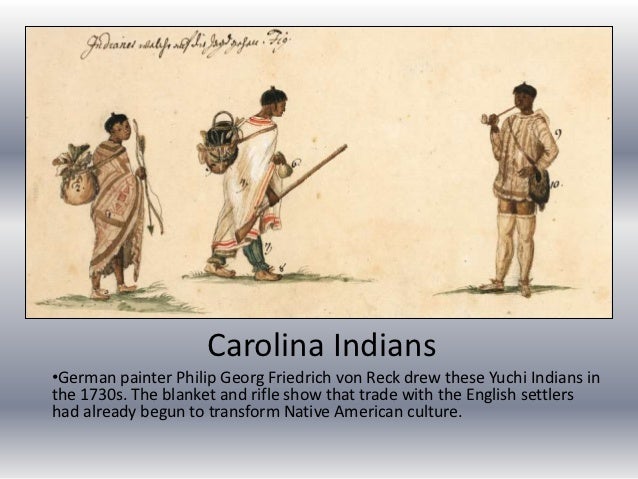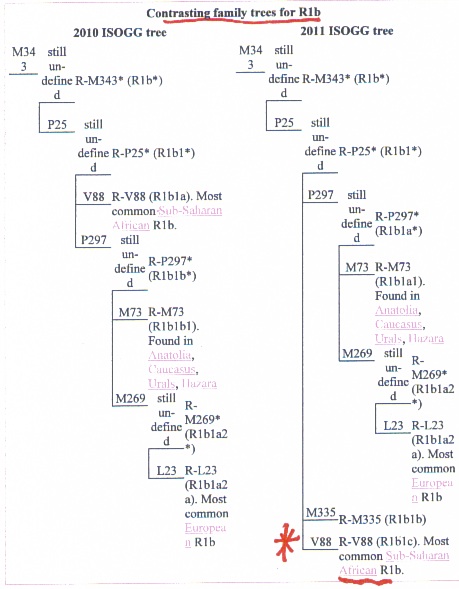We have been lied too about Black History. When I was growing up my mother made it clear that we were part Choctaw. So in 1967, I took a survey at my High School: DuSable, in Chicago and found that over 40% of my classmates had Indian heritage.

Choctaw
At the time many people laughed at us because they only saw Lakota ad Apache on T.V. Today because of the WWW, there are numerous pictures of Black Native Americans on the Web. Below French artist Alexandre de Batz's renderings of Native American life in colonial Louisiana, such as "Desseins de Sauvages de Plusieurs Nations" ("Drawings of Several Native Americans of Various Nations") from 1735


Below a Blackfoot warrior by Karl Bodmer, between 1840 and 1843.
The majority of Native Americans in North America carry haplogroup R M173.

R1-M269 probably originated in Africa. In my paper POSSIBLE AFRICAN ORIGIN OF Y-CHROMOSOME R1-M173 ; I argue that the P clade originated in Africa because 1) the age of R-V88 and 2) the widespread nature of R1 in Africa. Researchers have found that the TMRCA of V88 was 9200-5600 kya (Cruciani et al, 2010). Eurasians carry the M269 (R1b1b2) mutation. The subclades of R1b1b2 include Rh1b1b2g (U106) (TMRCA 8.3kya) and R1b1b2h (U152) (TMRCA 7.4kya). The most recent common ancestor for R1b1b2 in Europe is probably 8kya (Balaresque et al, 2010). Y-Chromosome R1b1b2 has high frequencies in England, France, Italy and Germany (Balaresque et al, 2010). Clearly, R-V88 is older than R-M269 .

This figure from the Gonzalez et al article found that 10 out of 19 subjects in the study carried R1b1-P25 or M269. This is highly significant because it indicates that 53% of the R1 carriers in this study were M269, this finding is further proof of the widespread nature of this so-called Eurasian genes in Africa among populations that have not mated with Europeans.
Gonzalez et al proposes a West to East spread for P-25, with a possible entry of this clade into Europe via Gibraltar. There is a variety of R haplogroups in Africa.

Finding Africans carrying R-M269, in addition to V88, is nothing new. As early as 2009 R-M269 was found in Africa.
Berniell-Lee et al (2009) found in their study that 5.2% carried Rb1*. The frequency of among the Bantu ranged from 2-20. The frequency of R1b1 among the Pygmy populations is 5% (Berniell-Lee et al, 2009). The frequency of R1b1 among the Guinea-Bissau populations was 12% (Carvalho et al,2010). Gonzalez et al found a high percent of R-M269 in Guinea.
Most Eurasians carry the M269 (R1b1b2) mutation. The subclades of R1b1b2 include Rh1b1b2g (U106) (TMRCA 8.3kya) and R1b1b2h (U152) (TMRCA 7.4kya)

The most recent common ancestor for R1b1b2 in Europe is probably 8kya (Balaresque et al, 2010). Y-Chromosome R1b1b2 has high frequencies in England, France, Italy and Germany (Balaresque et al, 2010) .Clearly, R-V88 dating to 9kya, is older than R-M269 .
In summary the frequency of R-M269 in Africa and age of V88, suggest that R-M269 originated in Africa. The presence of Black Native American communities on the Eastern Seaboard, a region where R1 is found suggest that it was these Black Indians who introduced R1 to America, not Europeans.

No comments:
Post a Comment